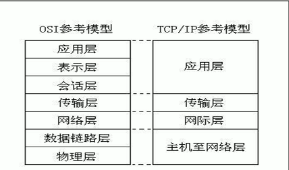网络参考模型
网络通讯要素
- IP地址:网络中设备的标识
本地回环地址:127.0.0.1 主机名:localhost - 端口号:用于标识进程的逻辑地址,不同进程的标识
有效端口:0~65535,其中0~1024系统使用或保留端口 - 传输协议:通讯的规则
常见协议:UDP、TCP
-
UDP:
例:QQ、对讲机- 将数据及源和目的封装成数据包中,不需要建立连接
- 每个数据包的大小限制在64k
- 因无连接,是不可靠协议(可能找不到地址)
- 不需要建立连接,速度快
-
TCP:
例:打电话- 建立连接,形成传输数据的通道。
- 在连接中进行大数据量传输。
- 通过三次握手完成连接,是可靠的
A:B你在吗?
B:我在
A:我知道了 - 必须建立连接,效率会降低
UDP传输
- Socket(插座)
相当于港口- 为网络服务提供的一种机制
- 通信的两端都有Socket
- 网络通信其实就是Socket间的通信
- 数据在两个Socket间通过IO传输
- UDP传输
- DatagramSocket与DatagramPacket
- 建立发送端,接收端
- 建立数据包
- 调用Socket的发送接收方法
- 关闭Socket
发送端与接收端是两个独立运行的程序
创建udp的发送端
思路:
- 建立udp的socket服务。
- 将要发送的数据封装到数据包中
- 通过udp的socket服务将数据包发送出去
- 关闭socket服务
代码演示
public class UDPSendDemo {
public static void main(String[] args) throws IOException {
System.out.println("发送端启动");
//1.udpsocket服务。使用DatagramSocket对象
DatagramSocket ds = new DatagramSocket();
//2.将要发送的数据封装到数据包中
String str = "udp传输演示:哥们来了";
//使用DatagramPacket将数据封装到该对象包中。
byte[] buf = str.getBytes();
DatagramPacket dp = new DatagramPacket(buf,buf.length,InetAddress.getByName("192.168.0.101"),10000);
//3.通过udp的socket服务将数据包发送出去.
ds.send(dp);
//4.关闭资源
ds.close();
}
}
创建udp的接收端
思路:
- 建立udp socket服务,因为是要接收数据,必须要明确一个端口号
- 创建数据包,用于存储接收到的数据。方便用数据包对象的方法解析这些数据
- 使用socket服务的receive方法将接收到的数据存储到数据包中
- 通过数据包中的方法解析数据包中的数据
- 关闭资源
代码演示
public class UDPReceiveDemo {
public static void main(String[] args) throws IOException {
System.out.println("接收端启动");
//1.建立udp socket服务
DatagramSocket ds = new DatagramSocket(10000);
//2.创建数据包
byte[] buf = new byte[1024];
DatagramPacket dp = new DatagramPacket(buf,buf.length);
//3.使用接收方法将数据存储到数据包中
ds.receive(dp);//阻塞式的
//4.通过数据包对象的方法,解析其中的数据,比如,地址,端口,数据内容。
String ip = dp.getAddress().getHostAddress();
int port = dp.getPort();
String str = new String(dp.getData(),0,dp.getLength());
System.out.println(ip+":"+port+":"+str);
//5.关闭资源
ds.close();
}
}
制作一个聊天小程序
public class Chat {
public static void main(String[] args) throws SocketException {
DatagramSocket send = new DatagramSocket();
DatagramSocket receive = new DatagramSocket(10000);
new Thread(new Send(send)).start();
new Thread(new Receive(receive)).start();
}
}
class Send implements Runnable{
DatagramSocket ds;
public Send(DatagramSocket ds) {
this.ds = ds;
}
public void run() {
BufferedReader bufr = new BufferedReader(new InputStreamReader(System.in));
String line = null;
try {
while((line=bufr.readLine()) != null) {
byte[] buf = line.getBytes();
DatagramPacket dp = new DatagramPacket(buf,buf.length,InetAddress.getByName("192.168.0.101"),10000);
ds.send(dp);
if("886".equals(line))
break;
}
} catch (IOException e) {
e.printStackTrace();
ds.close();
}
ds.close();
}
}
class Receive implements Runnable{
DatagramSocket ds;
public Receive(DatagramSocket ds) {
this.ds = ds;
}
public void run() {
while(true) {
byte[] buf = new byte[1024];
DatagramPacket dp = new DatagramPacket(buf,buf.length);
try {
ds.receive(dp);
} catch (IOException e) {
e.printStackTrace();
}
String ip = dp.getAddress().getHostAddress();
int port = dp.getPort();
String str = new String(dp.getData(),0,dp.getLength());
if(str.equals("886")) {
System.out.println(ip+":"+port+"退出了聊天室");
}
System.out.println(ip+":"+port+":"+str);
}
}
}
TCP传输
客户端建立的过程。
- 创建tcp客服端socket服务。使用的是Socket对象。
建议改对象一创建就明确目的地。要连接的主机。 - 如果连接建立成功,说明数据传输通道已建立。
该通道就是socket流,是底层建立好的。既然是流,说明这里既有输入,也有输出。
想要输入或者输出流对象,可以找Socket来获取。
可以通过getOutputStream(),和getInputStream()来获取两个字节流。 - 使用输出流,将数据写入。
- 关闭资源
** 代码演示 **
public class ClientDemo {
public static void main(String[] args) throws UnknownHostException, IOException {
//创建客服端socket服务。
Socket socket = new Socket("192.168.0.101",10002);
//获取socket流中的输出流
OutputStream out = socket.getOutputStream();
//使用输出流将指定的数据写出去
out.write("tcp演示,哥们来了!".getBytes());
//关闭资源
socket.close();
}
}
服务端建立的过程。
- 创建服务端socket对象,通过ServerSocket对象
- 服务端必须对外提供一个端口,否则客服端无法连接。
- 获取连接过来的客服端对象
- 通过客户端对象获取socket流读取客户端发过来的数据并打印到控制台上。
- 关闭资源。关客户端,关服务端。
** 代码演示 **
public class ServerDamo {
public static void main(String[] args) throws IOException {
//服务端接收客户端发送过来的数据,并打印到控制台上。
//1.创建服务端对象
ServerSocket ss = new ServerSocket(10002);
//2.获取连接过来的客服端对象
Socket s = ss.accept();//阻塞式
String ip = s.getInetAddress().getHostAddress();
//3.通过socket对象获取输入流,要读取客户端发来的数据
InputStream in = s.getInputStream();
byte[] buf = new byte[1024];
int len = in.read(buf);
System.out.println(ip+":"+new String(buf,0,len));
s.close();
ss.close();
}
}
